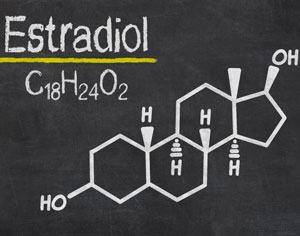Testosterone Deficiency and Gynecomastia in Men
Two conditions can affect men as they age: testosterone deficiency and gynecomastia. The connection between testosterone and gynecomastia becomes even more concerning because both high and low levels of the androgen hormone can influence male breast size.
While it is not a significant health risk, the development of gynecomastia by testosterone level changes in the body can have a demoralizing and emotional effect on men. Male breast development is a source of embarrassment for some individuals.
In this review of testosterone deficiency, gynecomastia, and hormonal changes, we will answer the following questions:
- What is gynecomastia?
- How does testosterone influence male breast tissue?
- What is the treatment for gynecomastia?
- Can testosterone therapy help gynecomastia?
- Can testosterone therapy cause gynecomastia?
- How can I use testosterone therapy and not get gynecomastia?
- How can I reduce the risk of developing gynecomastia?
The connection between testosterone deficiency and gynecomastia is one that can have an emotional effect on men.
What Is Gynecomastia?
As we begin our discussion of testosterone deficiency and gynecomastia, we must first define what gynecomastia is and why it occurs in some men.
Gynecomastia is an increase in male breast tissue. It is caused by changes in the balance of two hormones: testosterone and estrogen. Growth hormone and its mediator, insulin growth factor 1 (IGF-1) may also influence breast development.
The primary focus is on testosterone levels and gynecomastia. Men have significantly higher testosterone levels in their bodies than women, who have more estrogen. It is estrogen that fuels breast development, which is why males have less breast growth than females.
When changes occur in the level of testosterone, gynecomastia can occur in one or both breasts. Gynecomastia is most common in infants, shortly after birth, and when boys go through puberty and hormone surges alter body composition. Older men may develop gynecomastia as their testosterone levels decline in later years. As many as one in four men may experience this. Rare neoplasms may also cause breast tissue to increase in males.
Certain medications, chemicals that mimic estrogens, and even estrogen-containing foods can alter the testosterone to estrogen ratio in the body.
How Does Testosterone Influence Male Breast Tissue?
Testosterone, itself, is not a direct stimulator of breast growth. The hormones involved in breast tissue development are estrogen and progesterone, although they need the anterior pituitary produced growth hormone and its mediator, IGF-1, to stimulate mammary growth. Higher levels of IGF-1 have been found in boys who developed pubertal gynecomastia.
In men, the connection between low testosterone and gynecomastia can occur for multiple reasons. The first is that the body naturally converts some of the free testosterone in the bloodstream into estradiol (the leading form of estrogen in men) before the testosterone has a chance to bind with and enter the androgen receptors. The result is a decrease in testosterone but an increase in estrogen levels that throws the two hormones out of balance.
Another factor is weight gain. Abdominal fat is the primary producer of the enzyme aromatase, which is responsible for the testosterone to estrogen conversion. More belly fat leads to increased aromatization of testosterone into estradiol. Since testosterone promotes lean tissue and estrogen promotes fat deposits, the increased estrogen levels lead to more weight gain.
As men age, they become more susceptible to testosterone deficiency and gynecomastia because their testosterone levels naturally decline (often before they reach age thirty). While testosterone levels decrease, the body still seeks out any free testosterone for estrogen conversion. Body fat increases with age, and the situation worsens.
Another factor in gynecomastia and low testosterone is that men also derive estrogen from androstenedione, another androgen hormone. Excess estrogen production can initiate male breast development.
Tumors of the testicles can also lead to overproduction or underproduction of testosterone that can influence estrogen levels. Some tumors stimulate estrogen production, leading to further excess.
Treatment for Gynecomastia
The best treatment for testosterone deficiency and gynecomastia is one that addresses the underlying problem or cause. Blood analysis will help the doctor rule out a tumor or cancer as the cause of the issues. Physical examination is also an important feature, as palpation of the breast tissue is necessary.
For men with gynecomastia, testosterone replacement therapy can help increase testosterone levels. If estrogen dominance is a problem, an aromatase inhibitor such as anastrozole can help block testosterone to estradiol conversion.
Surgery to reduce breast tissue size is only recommended as a last resort when nothing else works. Liposuction is another possibility to remove fat from the breasts. Again, it should be considered only when other, less invasive methods fail to yield the desired results.
Because being overweight often leads to low testosterone and gynecomastia, men are instructed to lose weight to decrease aromatase activity and increase testosterone levels.
Can Testosterone Therapy Help Gynecomastia?
When the problem is testosterone deficiency and gynecomastia, addressing the issue with testosterone therapy is often the answer. By increasing testosterone levels, the ratio of testosterone to estrogen can once again be normalized.
Can testosterone fix gynecomastia permanently?
Restoring natural balance to testosterone levels can help reverse gynecomastia. As long as testosterone remains the dominant hormone, gynecomastia should not return.
Can Testosterone Therapy Cause Gynecomastia?
For some men with gynecomastia, testosterone therapy is the cause. Low testosterone does not always lead to gynecomastia as a lack of free testosterone can also cause a decrease in estradiol conversion.
However, with testosterone deficiency and gynecomastia, treatment for Low T naturally provides more increased testosterone for the body to convert. That can raise estrogen levels higher than usual, resulting in breast enlargement.
Can I Use Testosterone Therapy and Not Get Gynecomastia?
To avoid the risk of gynecomastia, testosterone treatment can also include the use of anastrozole, the aromatase blocker. By administering anastrozole, the body retains testosterone without converting it to estradiol. The lower levels of estrogen in the bloodstream inhibit breast tissue growth.
Men who suffer from testosterone deficiency and gynecomastia, and are currently receiving testosterone therapy without anastrozole, should contact our doctor for more information.
How to Reduce the Risk of Developing Gynecomastia
To reduce the risk of developing gynecomastia, testosterone levels must remain in balance. Some actions you can take to protect testosterone production include:
- Getting enough sleep (between 7 and 9 hours each night)
- Losing weight if you are overweight
- Avoiding the use of illegal drugs and excessive alcohol intake
- Reviewing your current prescription and over-the-counter medications and supplements with your doctor or a hormone specialist
- Exercising regularly to increase testosterone production
To learn more about testosterone deficiency and gynecomastia, contact National HRT. Our hormone clinic provides confidential phone consultations to men and women throughout the US at no charge, so call today.




